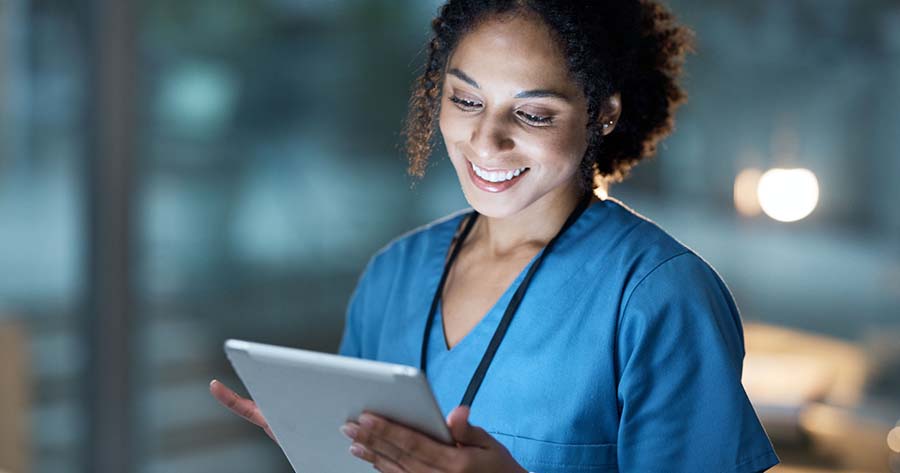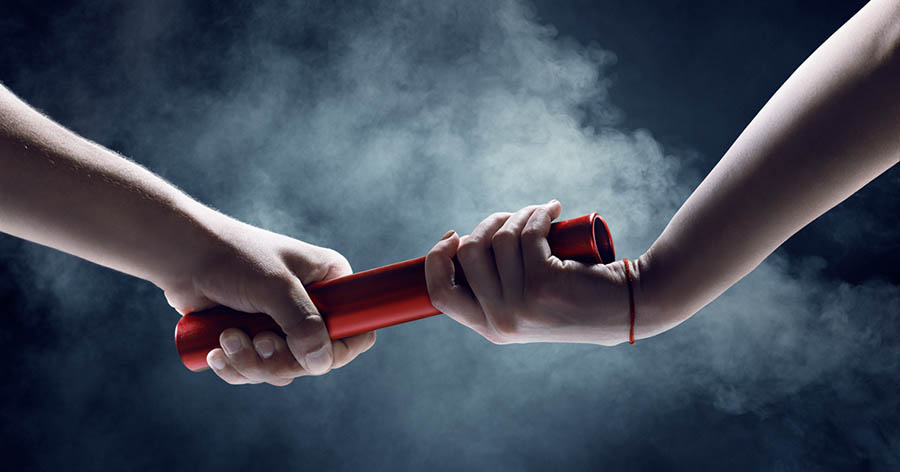Mr Andrew Pepper was born in Belfast in 1912. Andrew was diagnosed with type 1 in 1928 when he was 16 years old. He has been awarded the Lawrence Medal for having diabetes for 60 years and the Alan Nabarro Medal from the British Diabetic Association (Diabetes UK) for living with diabetes for 50 years.
Diagnosis
At the time of diagnosis, he was working in the linen business. Andrew remembers that he was losing weight and drinking ‘gallons of water’. Having recognised something was wrong, Andrew secretly looked in a medical book in his father’s study and realised that he had diabetes. The book (published in 1918) said that a young person diagnosed with diabetes only had about 18 months to live. Insulin had not been discovered at the time of the book’s publication.
Diabetes management
Andrew consulted his GP who tested his urine by ‘holding it over a Bunsen burner using Fehling’s solution’. At the time of diagnosis, he was admitted to the Royal Victoria Hospital where he remained for 3 weeks. A prescription of 42 units of beef-soluble insulin divided into three doses (ie, before breakfast, before lunch and before bedtime) was arranged. Each vial cost 2 shillings and 8 pence (2/8) and he used three vials a week (each vial containing 100 ml).
Andrew used a glass syringe, which he boiled weekly, and he rinsed the syringe and needle out with methylated spirit after each use. He sharpened the needle on a match box! The needle at that time was a number 17 which Andrew reported was a like a ‘little poker’.
Andrew did not tell his friends or employers about his diabetes because he did not wish to be labelled; he wanted to live life on his own terms.
Dietary approach
Andrew was also discharged on a diet, which recommended a 1500 calorie breakfast of bacon, fried egg and toast. As he was still hungry on this diet, Andrew started smoking in an attempt to curb his appetite. Andrew had been advised to start smoking by the doctor, and he continued to smoke for 50 years. He was instructed to weigh all his food including vegetables.
Early days of diabetes clinics
Diabetes clinics were in their infancy when Andrew attended the Royal Victoria Hospital diabetes clinic. He attended at 2 monthly intervals, and had blood samples taken a week before his planned review. Blood was taken by a ‘man in a brown coat, who looked like a porter. He used the same syringe, rinsing it out with methylated spirit between patients. I was number 455. If my “sugars” were high, the doctor, I think his name was ‘Smith”, would “tear strips off me”’. The medical staff did not tell him about hypoglycaemia and when he had a mild hypoglycaemic episode, which included palpitations he thought that he had a heart complaint and kept quiet about it.
One morning, after Andrew had had diabetes for about 9 years, he woke early, and thought he was paralysed: ‘I couldn’t move, but I was quite lucid’. He was admitted to Royal Victoria Hospital, where hypoglycaemia was diagnosed. He was kept there for 5 weeks and was advised to eat two breakfasts.
Changes in lifestyle
Andrew has led a full and active life, playing cricket regularly. His philosophy is ‘diabetes doesn’t keep you from being fit’. He married in 1950 and had four children, none of whom have developed diabetes.
Andrew worked as a manager for the Linen Bleachers Association for 29 years, travelling to Scotland regularly. He obtained his first blood glucose meter in about 1974. When travelling he carried sugar lumps and whilst at home he drank powdered glucose in milk. He reported that he began taking medium-acting beef insulin in addition to beef soluble insulin in the 1970s.
Andrew feels that tremendous changes in diabetes care have made life more tolerable. He lives alone in sheltered accommodation, and although he is registered blind (age-related maculopathy not retinopathy) and has microalbuminuria, he is mobile and enjoys seeing his family and grandchildren regularly.
Discussion
Andrew’s story gives a picture of the changes and improvement in diabetes care over the last 50 years. Andrew has not let diabetes prevent him from leading a normal life. The advent of sterile disposable needles and the insulin pen delivery system is an innovation, that today, so many people take for granted.
One of most significant changes in patient management has been the provision of blood monitoring meters, which allow the patient considerably more freedom and independence. The philosophy and culture in regard to carbohydrate intake has changed greatly since Andrew was diagnosed with diabetes in the 1920s. It was common practice to recommend ‘a starvation diet’ for a person with diabetes. Before the discovery of insulin, carbohydrate restriction was a key factor in determining the length of patient survival.
The advent of the NHS has made a great difference in that patients no longer need to pay for drugs. Before the late 1970s, home monitoring of diabetes was unsophisticated. The role of nurses has evolved, and they now perform many of the tasks and much of the education that would have been provided by doctors in Andrew’s time. Screening for the detection of early complications has also improved greatly.




Developments that will impact your practice.
22 Dec 2025